After three days of learning about modern farming, we decided to spend a day learning more about the history of farming here in Iowa. An excellent place to do that is at the Living History Farms in Urbandale just outside of Des Moines Iowa. The large outside museum has three farms, each showing farming at a different time in history, and a town set in 1875.
Because of the size of the place, they offer a tractor ride out from the town to the farms. We got a quick look at the town before riding out to the first farm showing out the Ioway Indians farmed in the 1700-hundreds.
IOWAY INDIAN FARM
The Ioway Indians were subsistence farmers and it was the women that did the farming, and most other things too, while the men were responsible for hunting and making tools. The raised corn, beans, and squash and stayed in different locations for winter and summer. Here are my two older kids in front of an Ioway summer house.
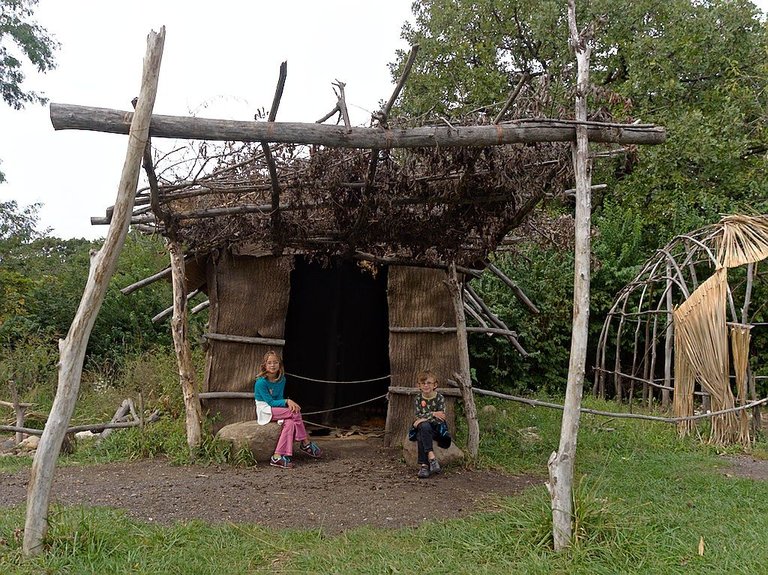
You can see a badly damaged winter house to the right in the picture. Most of the cattail covering is missing. The Ioway also used tipis when they were out hunting and the kids got to practice putting up a small tipi. The guide said that 2 Ioway women could put up a full-size tipi in less than 2 minutes. It took a bit longer for us to get the little one up and I don't think it would have held up very well in anything more than a gentle breeze.
1850 PIONEER FARM
After the Indian farm, we followed the trail and could read along the way signs telling major historic events that happened between 1700-hundred and 1850, the time that the Pioneer farm was set in. A lot happened in those 150 years. At that time there was almost no Indians left in Iowa, most of them had been moved into reservations and most of the young state was now inhabited by pioneers. This farm shows a young farm only settled a few years before and most things are still very primitive. The three major crops were corn, wheat, and potato. The corn was primarily used to feed the animals, the wheat was sold to make flower and potato was a staple in almost every meal served at the farm. Few farmers could afford a horse and a pair of Oxen was commonly used instead.
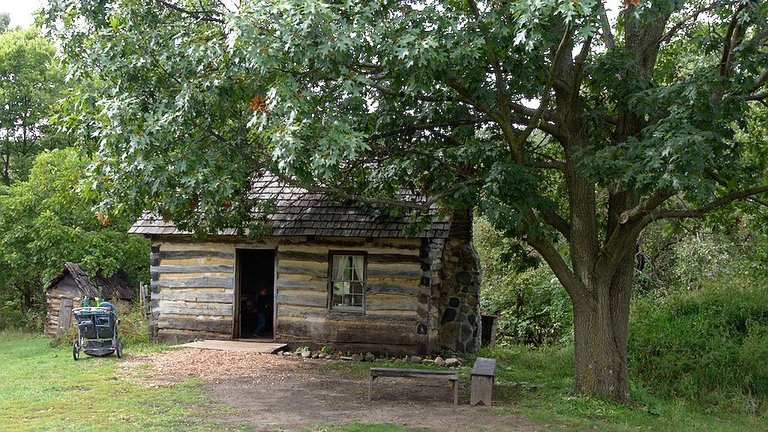 >
>The small farmhouse only had one room with a fireplace on one side and a bed on the other. There was also a sleeping loft where the children would have slept. This farm is actively farmed in the same way it would have been over 150 years ago. They also, every day, cook a meal from what they produce at the farm that the staff gets to eat. When we got there they were doing dishes and cleaning up after serving that meal.
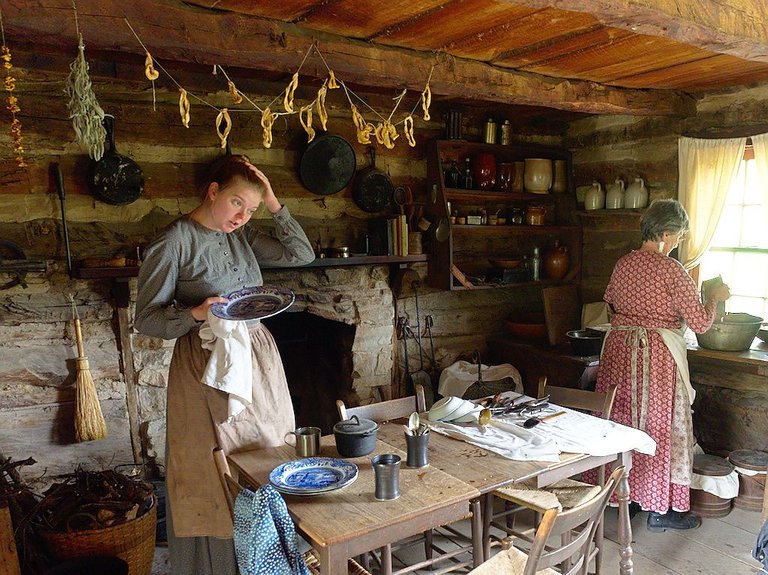
Outside the barn, Peter found the iron lock-pin for the cart very interesting to play with as we listen to a guide explain how life was at a farm in the 1850s.
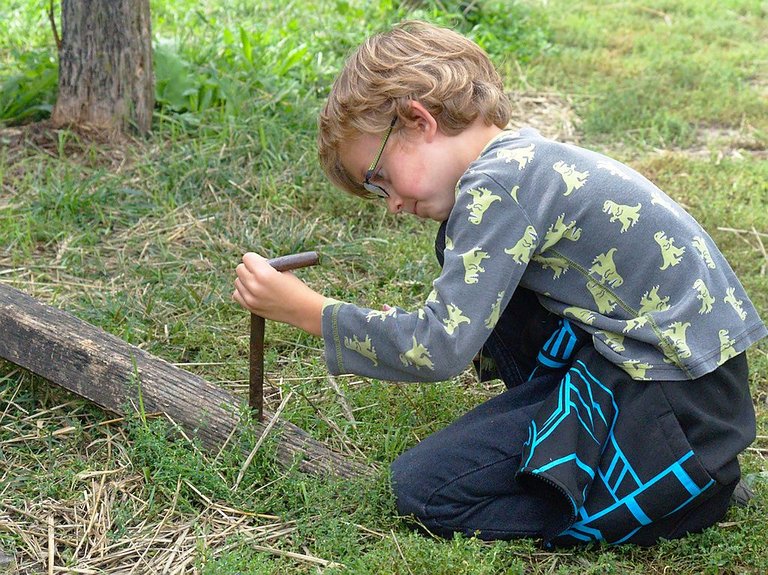
We then continued on the "time-travel trail" and read about what happened in the next 50 years up to the year 1900 and the next farm.
1900 HORSE-POWERED FARM
This last farm in the museum is much larger and more established. The farmhouse is large and there are many other buildings on the property. By now most farms were using horses to pull the farm equipment and technology had advanced significantly. There were even farms that had a gas powered tractor although they would not be very common for another 40 years or so.
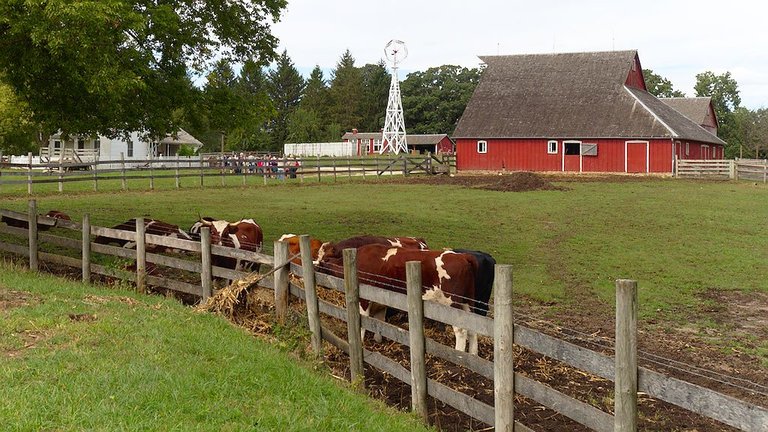
Peter loved climbing on and trying to figure out how the different machines worked and what they were used for.
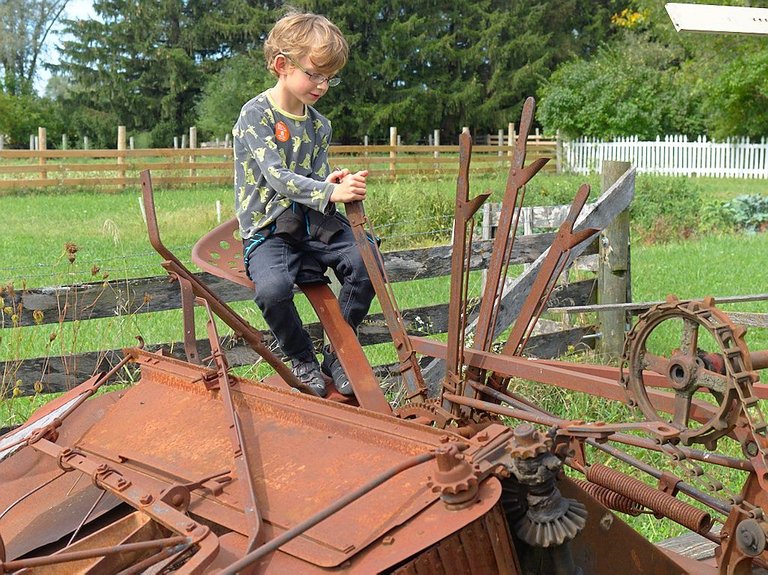
When the kids saw this surrey they had to get in it and sing!
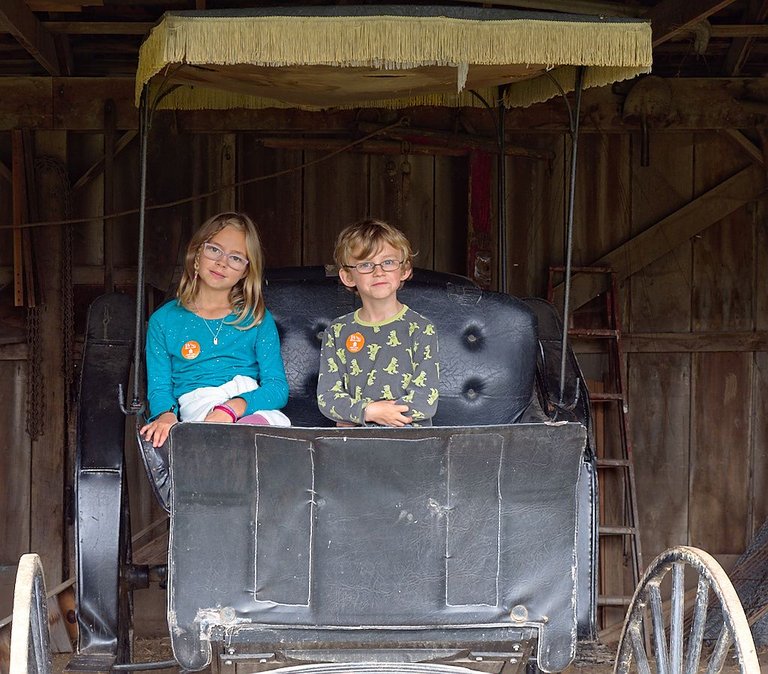
When I take you out in the surrey
When I take you out in the surrey with the fringe on top
Watch that fringe and see how it flutters
When I drive them high steppen strutters
Nosy pokes will peek through their shutters and their eyes will pop!
On the way from the last farm back to the where the tractor would pick us up and take us back to town was an old tractor showing that we now were approaching modern times. The "time-traveling trail" continued up all the way to modern farming and completed the historic journey from the 1700-hundreds Ioway farm til today's modern farming.
1875 TOWN OF WALNUT HILL
The first stop as we got into town was the school.
The school
The kids wanted to play school so we had them follow the school rules written on the blackboard.
- Be quiet.
- Sit up straight.
- Stand when reciting.
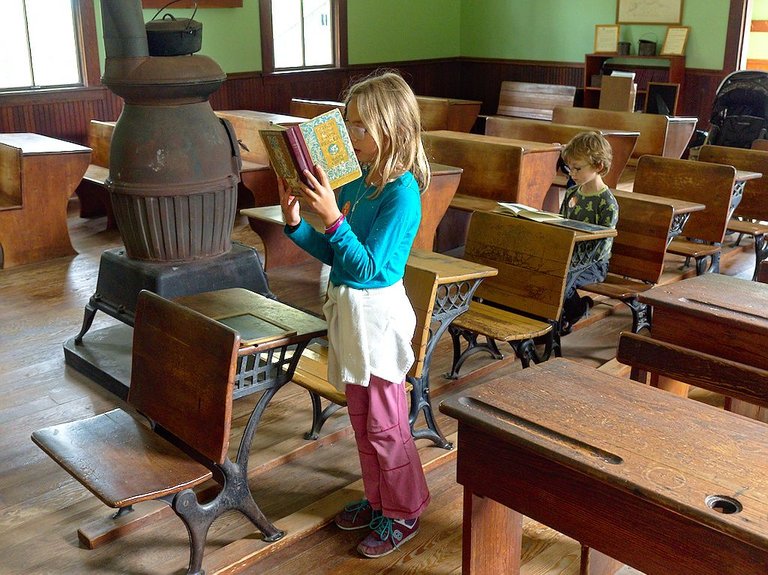
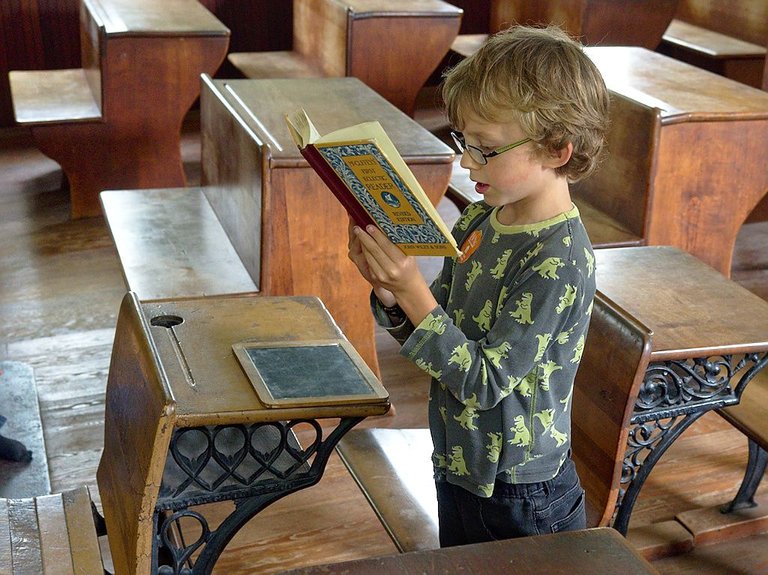
The each got a reading book appropriate for their level and got to recite one of the lessons from the book. We all had a blast but knew that time was getting short and there were many more interesting places to visit before they close at 4 o'clock.
Walnut Hill Broom Works
Here we got to see how they use broom corn to make brooms of highest quality.
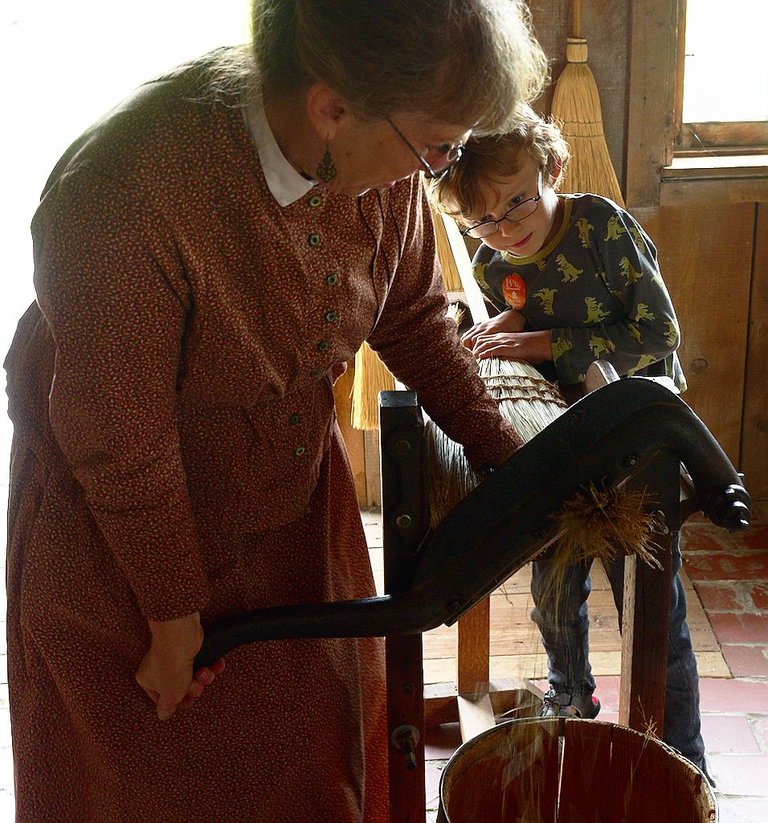
When we arrived it was time to cut the broom to length. She showed us that a good broom should be able to stand on its own.
The Blacksmith
One of my favorite stops in town was the blacksmith. From him we learned that a blacksmith in 1875 made very few things but spent most of his time repairing broken things or customizing mass-produced products. He could make a horseshoe in about 2 hours or use a factory made one that cost half as much and be done in less than half the time.
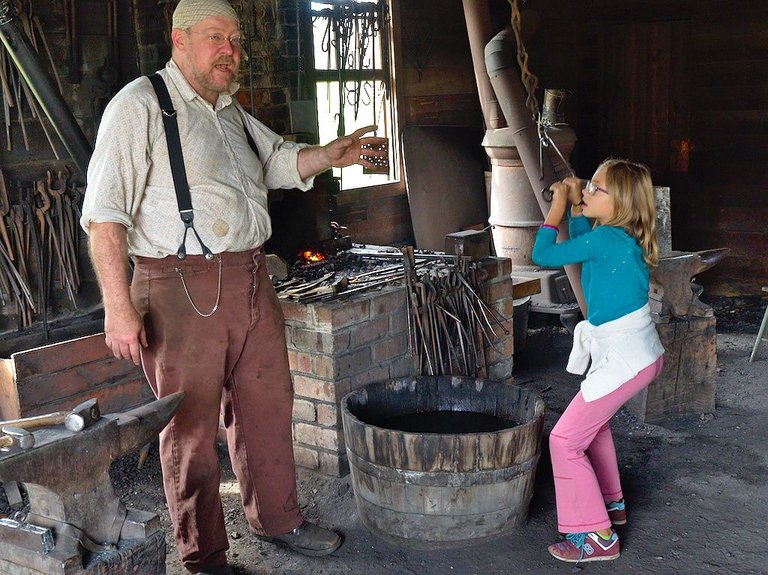
He inlisted Emelie as an apprentice and she got to help him by pulling the bellow and making the fire hot enough. We were lucky that he let her go in less than the customary 7 years!
The Lawyer
At the lawyer's office, we learned that one of his main jobs was to keep records of the land that were bought and sold. We also learned Iowa was the first state in the union that gave a woman license to practice law.
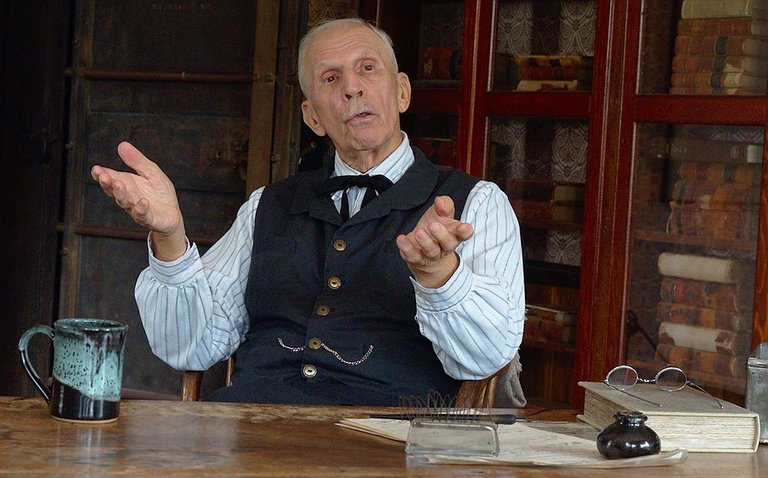
The Walnut Hill Bank
At the bank, we got to see a check and learned about small loans and how paper money still was not trusted by most people. Coins felt better and people tended to keep those instead of the paper with a printed value on it.
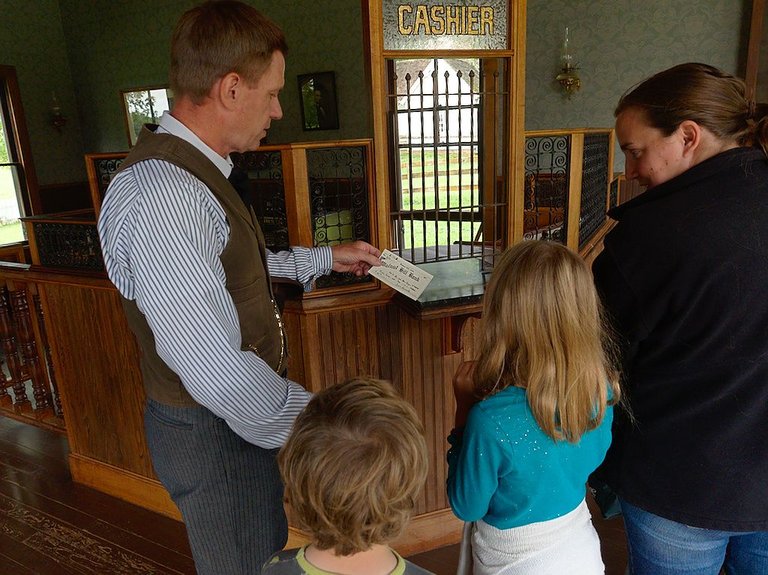
Advocate Print Shop
Next to the bank was the Advocate Print Shop where we got to come close and see how the newspaper was printed. She even cranked the printer and showed how the paper would be pulled over the type and then pressed and lifted away to make way for the next paper.
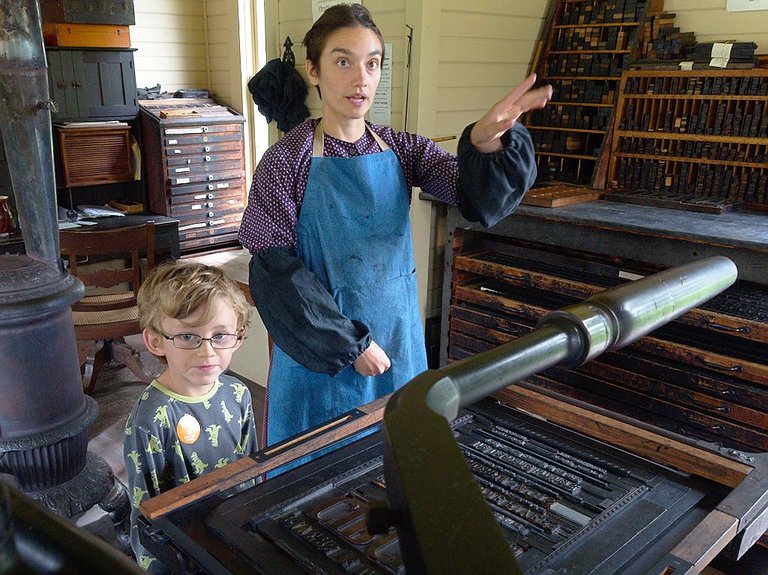
I have never been in a place that allowed me to get this close to history. We could not just watch but also feel and touch the tiny types. We got to see her put some words together and try to read them from the types.
The Drug Store
Timing was just right and when we entered the drug store it was time to feed the European Medicinal Leeches!
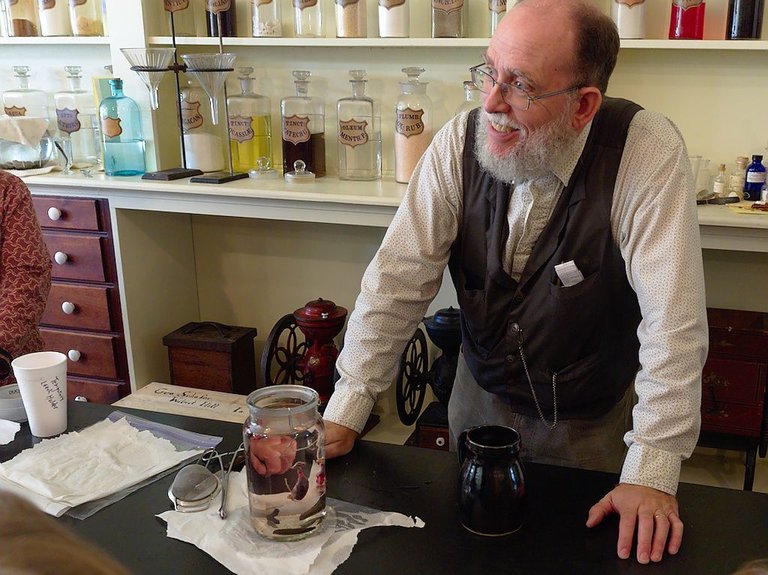
These bloodsuckers were used to suck blood out of large bruises or swollen joints or just to get rid of what was thought to be bad blood. Some of the leeches had not been feed for several months and it was very interesting to see them wiggle around with the tiny sacks of blood.
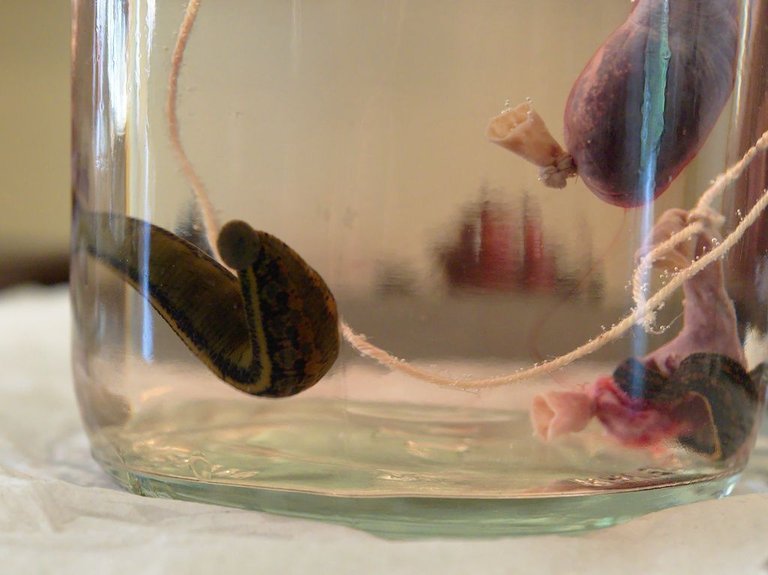
This museum had more to see and do than we could fit into one day. It really invited us to experience a town in the year 1875 with all its different shops and houses. We did not have time to visit all of them and the ones that we did see we often could have stayed longer if time had allowed. The kids would have been happy staying in any one of them for much longer playing that they were working in the print shop or drug store or farming at the 1850s farm. This place was definitely worth the $49 we spent to travel back in time and not just learn about the history but become part of it for one day.
ResteemedThis looks great, thanks for sharing @fanstaf
Wow thank you for sharing such detailed adventures!! This was such a fun and educational post to read! I love all of the pictures you captured during your day of learning. I love the #roadschooling tag!
I homeschool as well and I look forward to getting my kids out to explore things like this. It kind of reminds me of DeAnna Rose Farmstead that we visit in Missouri. They have an old schoolhouse that the kids love going into and pretending they are having school there. Kudos to you all for giving your children the opportunity of an enrichment filled hands on learning education. I’ll be following you for more adventures! 😊 Upped and Steemed!
Thanks! It is very exciting to learn alongside our children. Field trips like this is the best part of school for the whole family.
I couldn’t agree more! Learning together is the best part of homeschooling :)
Quite interesting day you had...it's very hard for kids today to know what life was like before technology...Very nice place!
We did have a nice day! We try to help our kids learn and when possible experience different cultures and also how life used to be in different places and times.
THANKS!!! This article is very interesting to prepare for the coming "mini ice age" and extreme weather. The "modern" society" go away with hurricanes, volcano eruptions, fires ... Es better be prepared when can't reach a grocery store...
Yes, as a nation we have never been as vulnerable ! A śubsistance farm would be the best possible Place to be in a collapse of society. Most of us can't live like that, but we can learń a lot about itat solace like this and be better prepared.
Peace, Abundance, and Liberty Network (PALnet) Discord Channel. It's a completely public and open space to all members of the Steemit community who voluntarily choose to be there.Congratulations! This post has been upvoted from the communal account, @minnowsupport, by FanStaF from the Minnow Support Project. It's a witness project run by aggroed, ausbitbank, teamsteem, theprophet0, someguy123, neoxian, followbtcnews/crimsonclad, and netuoso. The goal is to help Steemit grow by supporting Minnows and creating a social network. Please find us in the
your post is really amazing friend, I like
Thanks for reading!
Fantastic is a good word to describe our day. We sometimes joke that I grew up in the 1800-hundreds and visiting this place seemed to confirm that! I recognized most of the farm tools at the horse powered farm from my childhood.